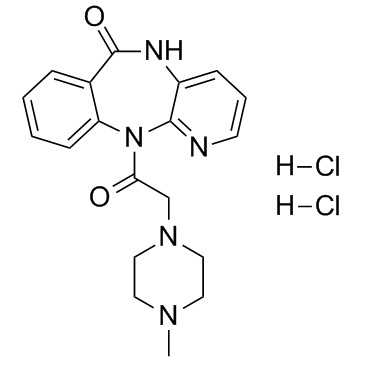Functional acetylcholine muscarinic receptor subtypes in human brain microcirculation: identification and cellular localization.
A Elhusseiny, Z Cohen, A Olivier, D B Stanimirović, E Hamel
文献索引:J. Cereb. Blood Flow Metab. 19 , 794-802, (1999)
全文:HTML全文
摘要
Acetylcholine is an important regulator of local cerebral blood flow. There is, however, limited information available on the possible sites of action of this neurotransmitter on brain intraparenchymal microvessels. In this study, a combination of molecular and functional approaches was used to identify which of the five muscarinic acetylcholine receptors (mAChR) are present in human brain microvessels and their intimately associated astroglial cells. Microvessel and capillary fractions isolated from human cerebral cortex were found by reverse transcriptase-polymerase chain reaction to express m2, m3, and, occasionally, m1 and m5 receptor subtypes. To localize these receptors to a specific cellular compartment of the vessel wall, cultures of human brain microvascular endothelial and smooth muscle cells were used, together with cultured human brain astrocytes. Endothelial cells invariably expressed m2 and m5 receptors, and occasionally the m1 receptor; smooth muscle cells exhibited messages for all except the m4 mAChR subtypes, whereas messages for all five muscarinic receptors were identified in astrocytes. In all three cell types studied, acetylcholine induced a pirenzepine-sensitive increase (62% to 176%, P<0.05 to 0.01) in inositol trisphosphate, suggesting functional coupling of m1, m3, or m5 mAChR to a phospholipase C signaling cascade. Similarly, coupling of m2 or m4 mAChR to adenylate cyclase inhibition in endothelial cells and astrocytes, but not in smooth muscle cells, was demonstrated by the ability of carbachol to significantly reduce (44% to 50%, P<0.05 to 0.01) the forskolin-stimulated increase in cAMP levels. This effect was reversed by the mAChR antagonist AFDX 384. The results indicate that microvessels are able to respond to neurally released acetylcholine and that mAChR, distributed in different vascular and astroglial compartments, could regulate cortical perfusion and, possibly, blood-brain barrier permeability, functions that could become jeopardized in neurodegenerative disorders such as Alzheimer's disease.
相关化合物
| 结构式 | 名称/CAS号 | 分子式 | 全部文献 |
|---|---|---|---|
 |
盐酸哌仑西平
CAS:29868-97-1 |
C19H23Cl2N5O2 |
|
The novel protein kinase C epsilon isoform modulates acetylc...
2015-01-01 [Mol. Brain 8 , 80, (2015)] |
|
Fasting stimulates 2-AG biosynthesis in the small intestine:...
2015-10-15 [Am. J. Physiol. Regul. Integr. Comp. Physiol. 309 , R805-13, (2015)] |
|
Adenosine receptors and muscarinic receptors cooperate in ac...
2015-07-01 [Eur. J. Neurosci. 42 , 1775-87, (2015)] |
|
Endocannabinoids mediate bidirectional striatal spike-timing...
2015-07-01 [J. Physiol. 593 , 2833-49, (2015)] |
|
M1 and m2 muscarinic receptor subtypes regulate antidepressa...
2014-11-01 [J. Pharmacol. Exp. Ther. 351(2) , 448-56, (2014)] |